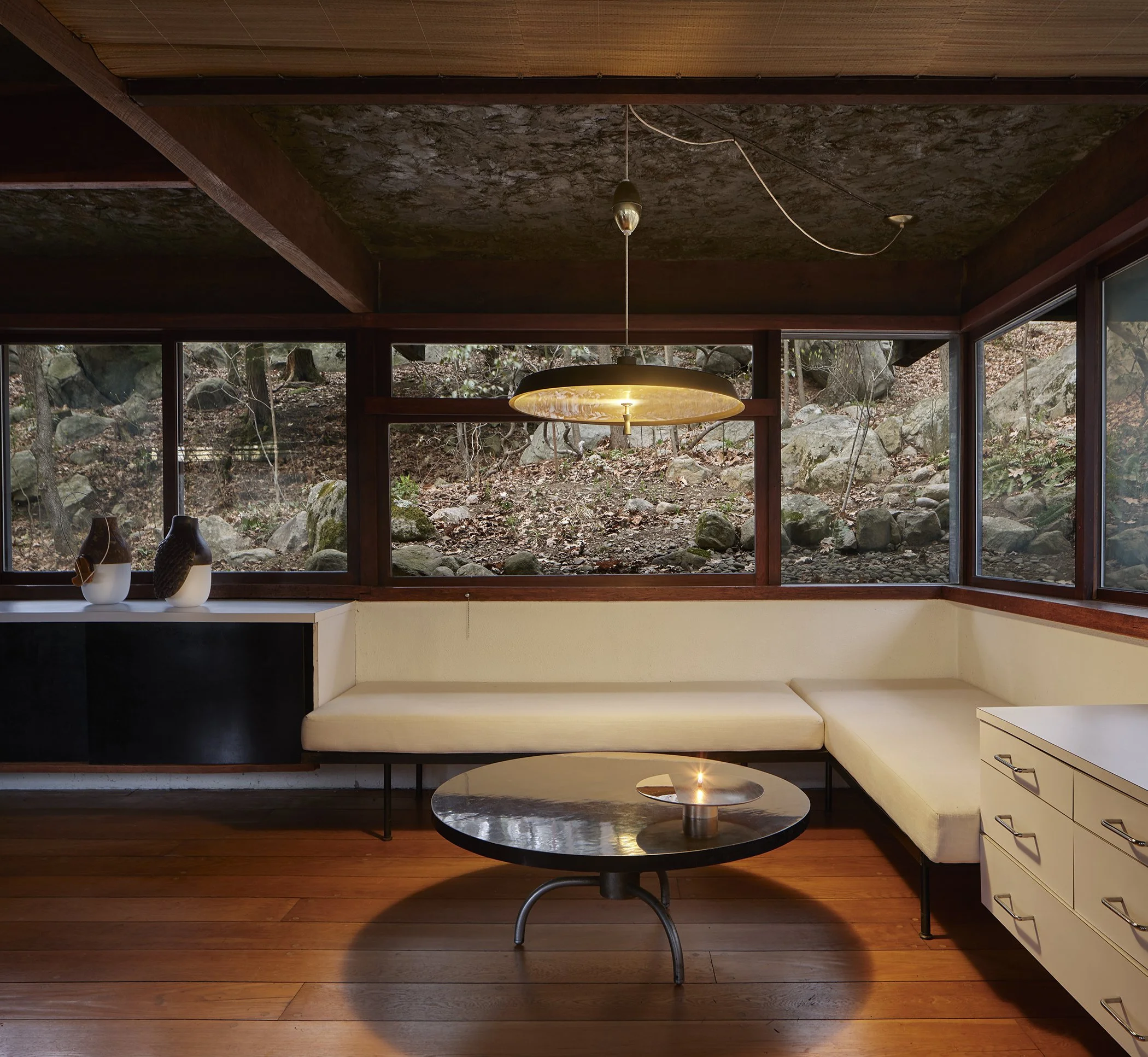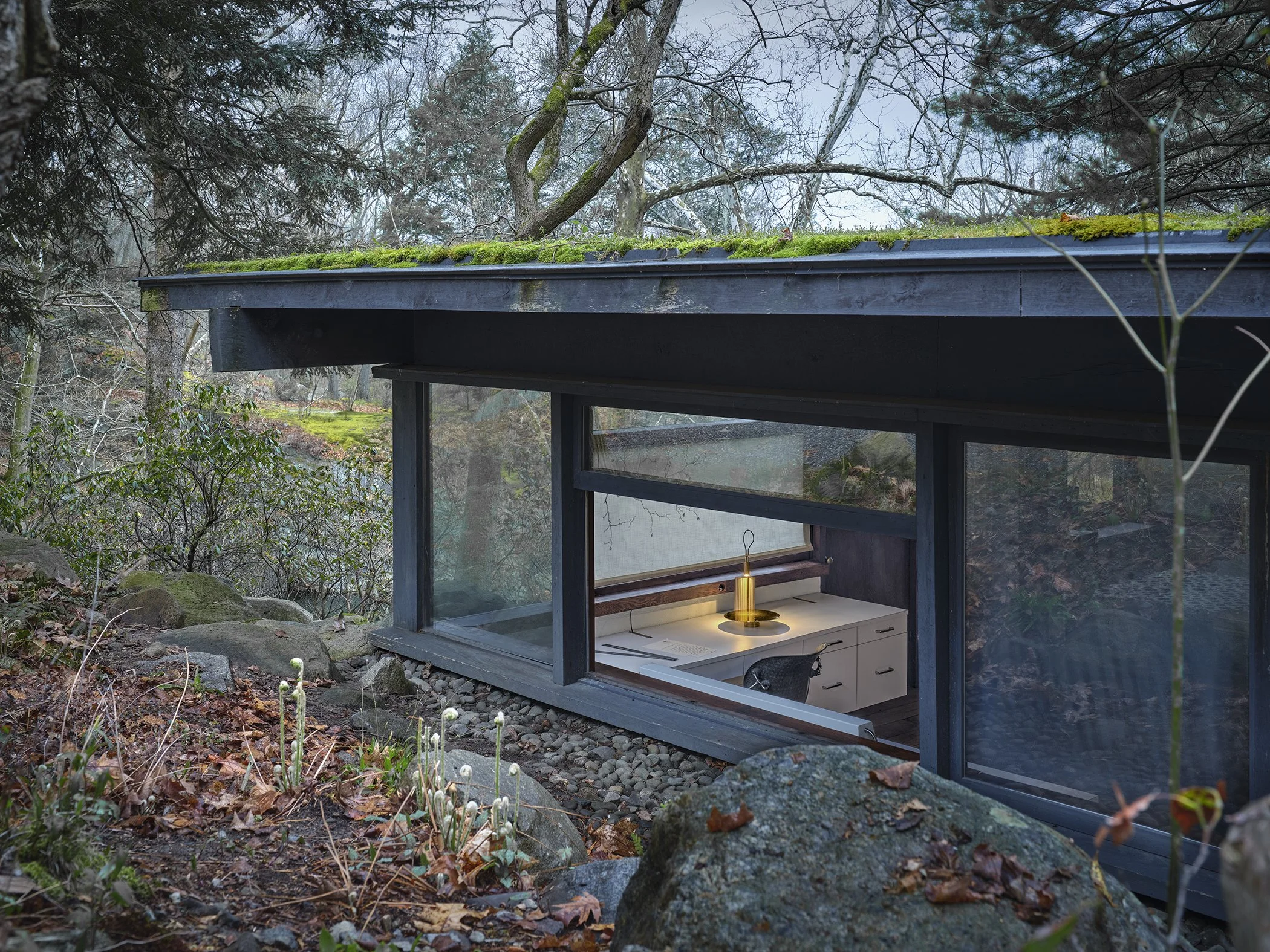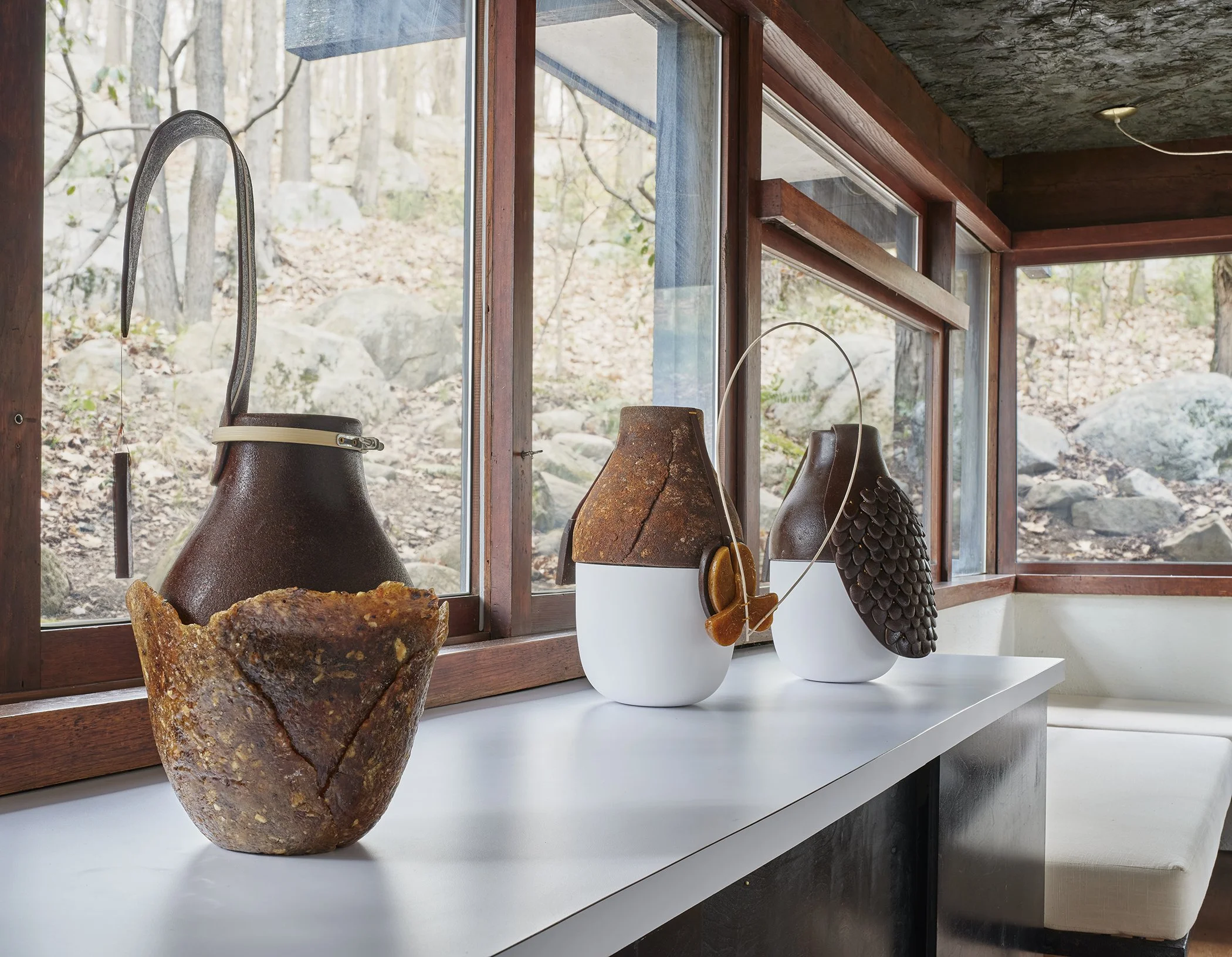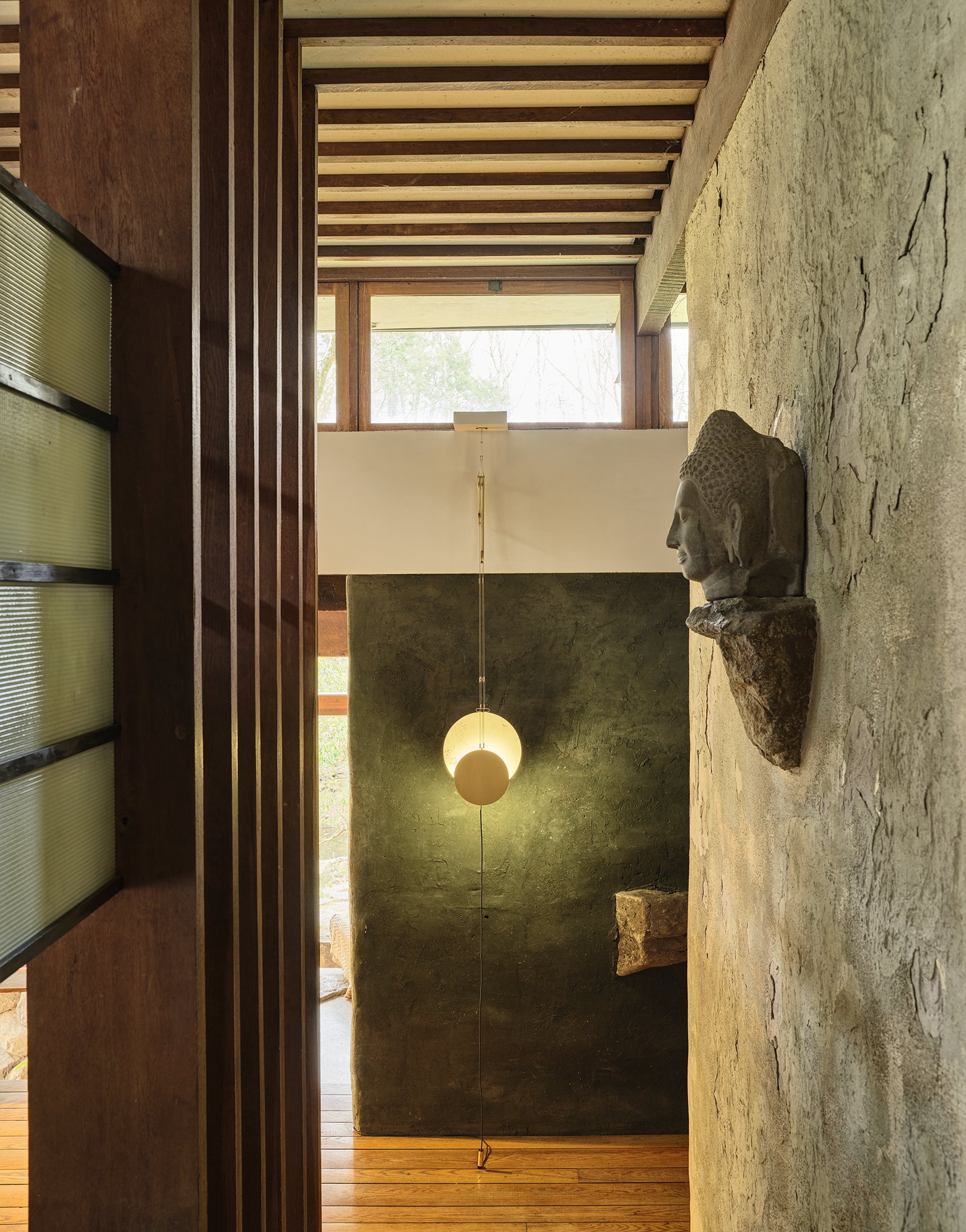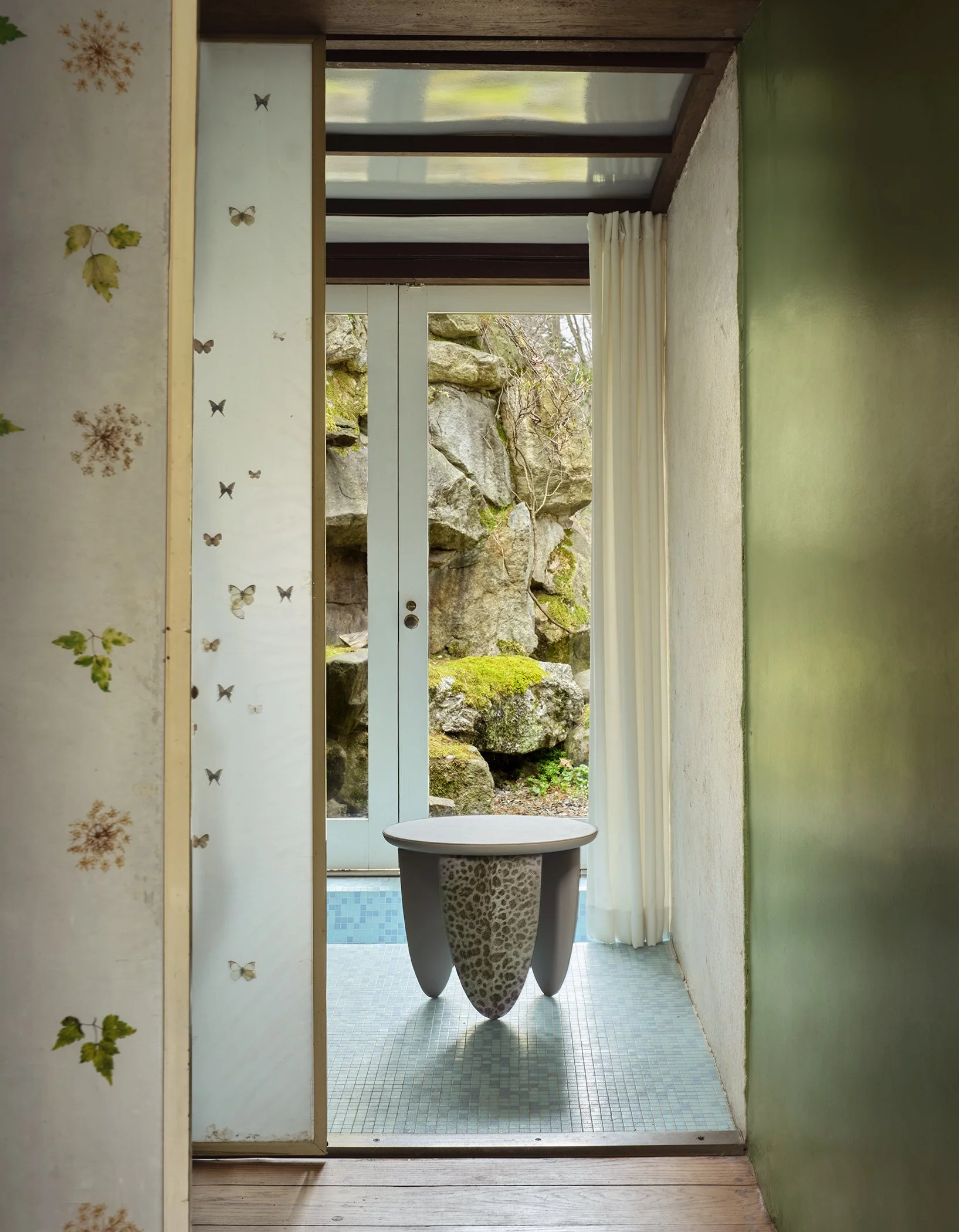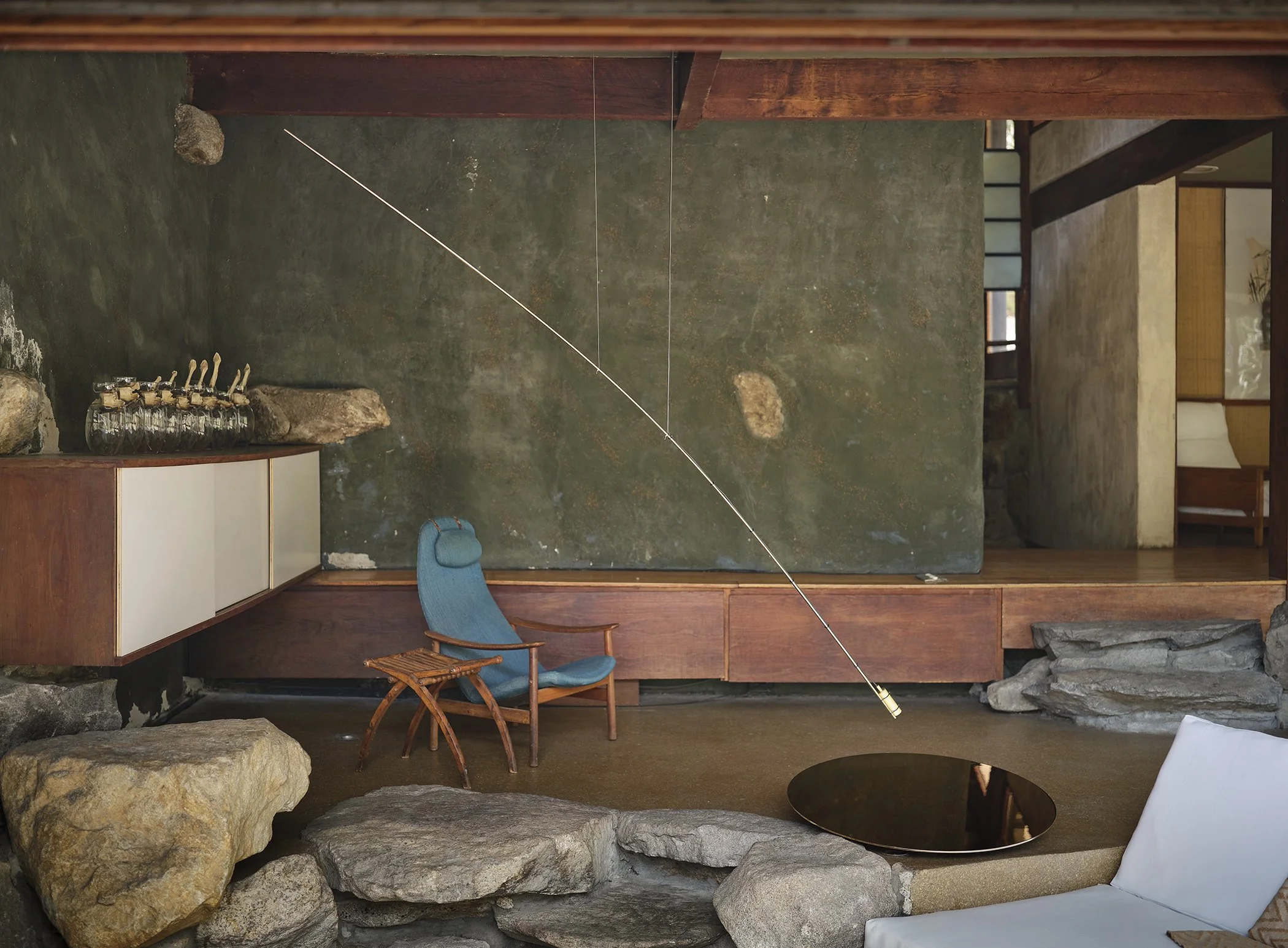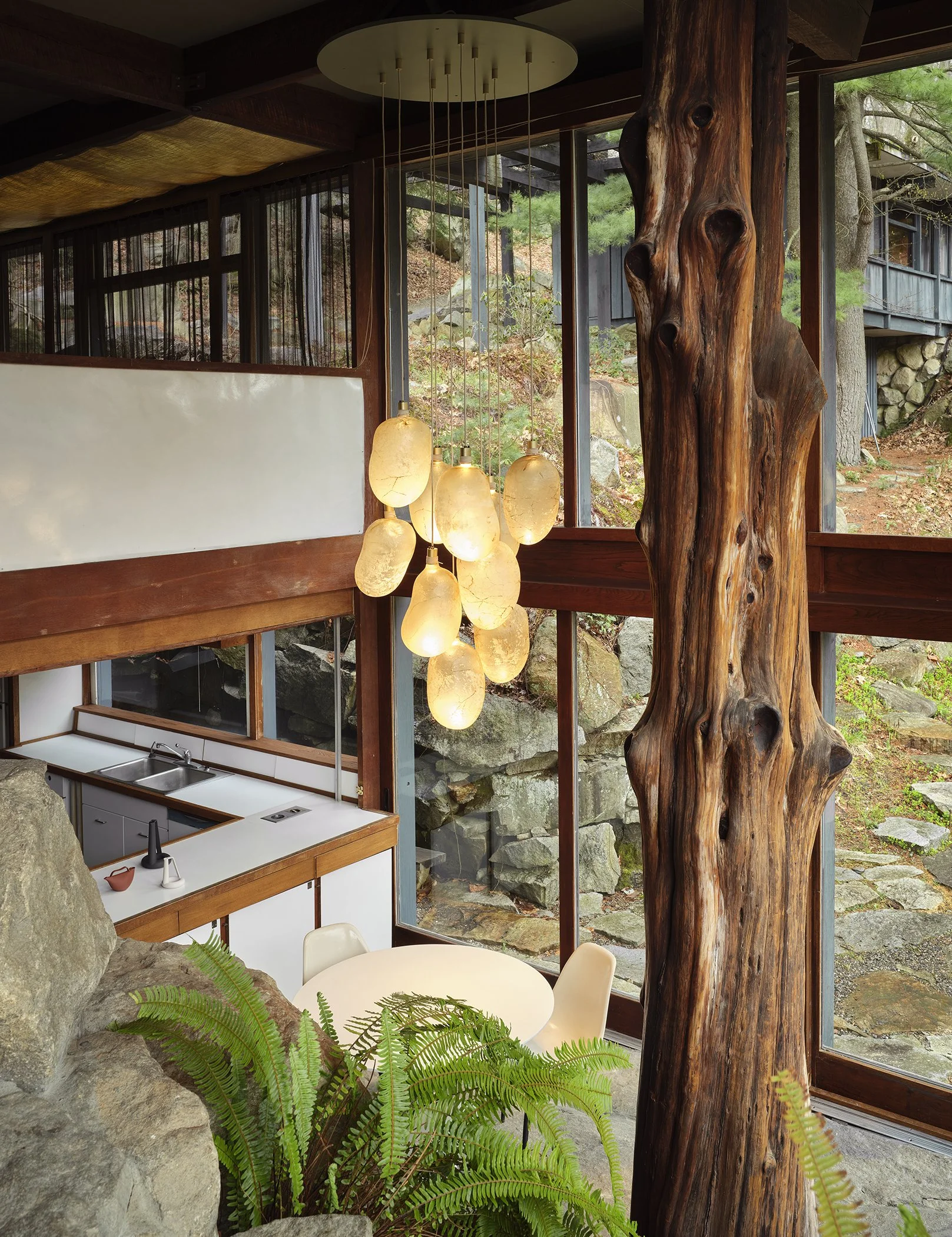Words Sophia Herring Photography Michael Biondo
Aurea Oil Lamp, Delta Collection, 2016.
The Netherlands-based Italian design duo behind Formafantasma, Andrea Trimarchi and Simone Farresin, are the third collaboration to temporarily take over late industrial designer Russel Wright’s Manitoga, his home and studio in Garrison, New York. However, if you haven’t visited the house before, it’s easy to mistake the contemporary exhibition pieces as original living staples of the home, fitting so harmoniously into their modernist surroundings.
In order to embark on the project, Trimarchi and Farresin visited the landscape and studied the home seamlessly perched on the ledge of a lake. Referred to as the “Dragon Rock,” the structure is an homage to the surrounding land: steps are made from the same rocks it sits on; ceilings are embedded with pine needles taken from the trees; and doorknobs are crafted in various stones sourced near the water. Despite the seemingly endless array of intricate details, there’s a striking simplicity to this home imbued with Wright’s quaker-born sensibilities. Formafantasma’s selected works, primarily from their earlier series, take a contemporary, naturalistic approach akin to Wright’s interior. The exhibition, Designing Nature, done in collaboration with Cold Spring-based museum and research center, Magazzino, spans the two structures on the property: Wright’s studio, and the family home.
Reflector Table Lamp, Delta Collection, 2016
The tour begins in the studio, where visitors are greeted by a series of vases perched along the window. They belong to Formafantasma’s Botanica Series, an exploration of pre-Bakelite sensibilities utilizing natural polymers extracted from plants and animals, processes which reflect the sustainability initiatives central to Trimarchi and Farresin’s craft. The rest of the series is displayed on open shelves that divide the room, integrating seamlessly alongside Wright’s own work and the work of others in his collection. In all their harmoniousness, it seems providential that both Wright and Trimarchi and Farresin have designed collections titled Botanica.
Botanica Collection, 2011.
Eclipse Ceiling Ligh, Delta Collection, 2016.
Wolffish Stool, Craftica Collection 2022 (2012).
New Reflector Floor, Delta Collection, 2016
A leaf-draped pergola leads into the main house, where objects from Formafantasma are integrated into every level of the home. Past a wooden corridor and down a few steps into the living room, a thin brass light floats from an invisible cord, casting a ray onto an illuminated brass surface — one of the studio’s many lighting pieces throughout the home. Behind it sits one of Formafantasma’s more recent works, the Bone Jug Series, comprised of nine mouth-blown glass jugs incorporating cow leather and vertebrae into each bottle neck.
Bone Jug Series, Craftica Collection, 2022 (2012)
Bladder Chandelier, 2022 (2012).
Across the open landing where a tree trunk spans from the floor to the double height ceilings, a series of delicately hung amorphous blobs illuminate the dining room table below. With a unique veining running through each, they nearly resemble sun-kissed stones. It turns out they are cow bladders from the same cows used for crafting the glass jugs. For Wright, who firmly believed that the dining table is the nucleus of the home, it seems fitting that the exhibition’s showstopper highlights just that.
Designing Nature by Formafantasma will be on view at Manitoga , Garrison, New York, through 11/15/22.
Sophia Herring is a contributor to Architectural Digest.


